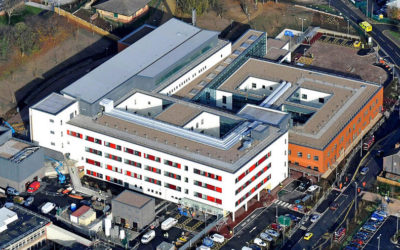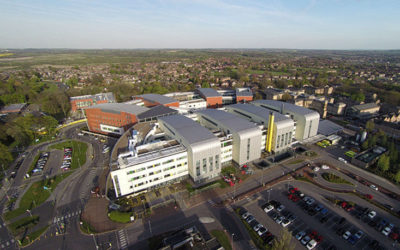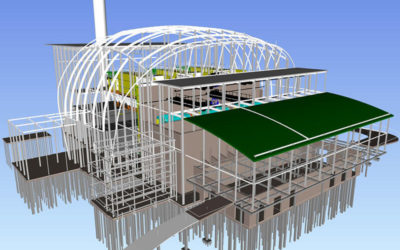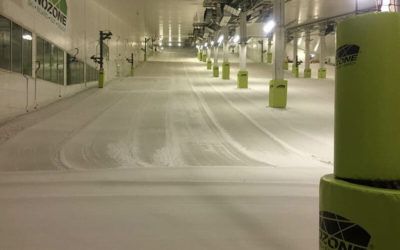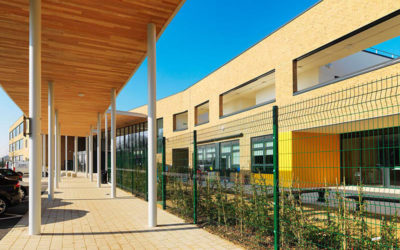OUR WORK
VAUXHALL UNDERGROUND STATION: LONDON
The Vauxhall Underground Station modernisation is part of Transport for London’s ongoing investment into London’s public transport network to support economic growth and employment opportunities.
The £45m project entailed reconfiguration of the station’s ticket hall to accommodate extra ticket gates and wide-aisle gates, as well as the refurbishment of the stations’ subways, ticket hall and stairs. The main part of the project was to make the access to the station step-free, enabling the station to handle 40% more passengers by installing a new shaft and lift between the ticket hall and platforms. A particular challenge was posed by the station remaining fully operational while the construction work took place between 2013 and 2017.
The main contractor selected was Bechtel, who proposed an innovative, new way of constructing the elevator shaft from below ground level, as well as utilising a sprayed concrete lining technique to save £9m from the total construction costs.
The principal requirement for the shaft was to accommodate the lift, which had to be constructed within the vertical concrete shaft and therefore required detailed co-ordination between all the existing structures, such as tunnels, ticket hall and the roof structure above.
Atom Consultants principal job was to create a BIM model of all the essential existing and new elements to enable total co-ordination to take place. We were also responsible for the structural design of all the structural elements providing support to the lift within the shaft and the escape stairs, which spiraled around the perimeter of the lift enclosure. As the construction proceeded, the access was available to make accurate measurements of the existing elements, and this information was fed back into BIM to adjust the model based on the actual survey conducted. As a result, the design was adjusted to fit within the actual building dimensions, whilst still maintaining the tight tolerances and necessary access space for lift maintenance engineers. Also, the entire model had to be co-ordinated with the London Grid, so that the facility could be incorporated into the London Underground Asset Register.
Additionally, all work had to be completed and independently reviewed in line with the precise standards to meet the stringent approval process for the London Underground.
Working in wonderful multi-disciplinary teams, which manage to collaborate efficiently is what made this project a particularly enjoyable one.
More info:
Bechtel’s case study on Vauxhall Underground Station, London, UK
TRANSPORTATION:
” The use of data is an inherent part of all Bechtel projects. Working collaboratively with Atom helped us deliver an innovate cost-effective solution for our customer and provide Londoners with their 70th step-free access tube station. “
MATT LAGAR
BECHTEL PROJECT MANAGER
OTHER PROJECTS
Pontefract Hospital, West Yorkshire
Pontefract Hospital, designed by Avanti Architects and built by Balfour Beatty is a model for a new type of community hospital that delivers a range of non-acute services for its local population. A two storey square courtyard building adjacent to the main entrance provides outpatient accommodation, while the taller L-shaped building provides the more heavily serviced and increasingly private zones.
Pinderfields Hospital – Wakefield
The redevelopment of Pinderfields Hospital has been central to the reconfiguration of health services in the Wakefield area. The new construction involved 90,000m² of acute hospital space on a footprint of 22,000m², all on a brown field site.
Inverdee House, Aberdeen- Scottish Environment Protection Agency
Inverdee House is an extensive project commissioned by the Scottish Environment Protection Agency (SEPA). The building created a new office for SEPA and it’s laboratories and also for Scottish Natural Heritage and Joint Nature Conservation Committee. The intention in the design of this building was to reduce the impact on the environment through best practices of sustainable design and construction methods. The resulting building achieved a BREEAM excellent rating and an EPC A rating.
Ince Marshes waste wood biomass plant
Atom Consultants developed the construction sequence planning for Balfour Beatty in submitting their bid for the Ince Marshes waste
XSCAPE – Milton Keynes & Castleford
Xscape, Milton Keynes is the ultimate entertainment destination offering a unique
Hertfordshire Building Schools for the Future Programme
Marriott & Lonsdale schools were designed to operate as separate communities but with shared facilities for the likes of sport, recreation, arts and performance space.
Charles de Gaulle Airport – Paris
Terminal 2E building of the Charles de Gaulle Airport in Paris is possibly the largest modular building in the world.

